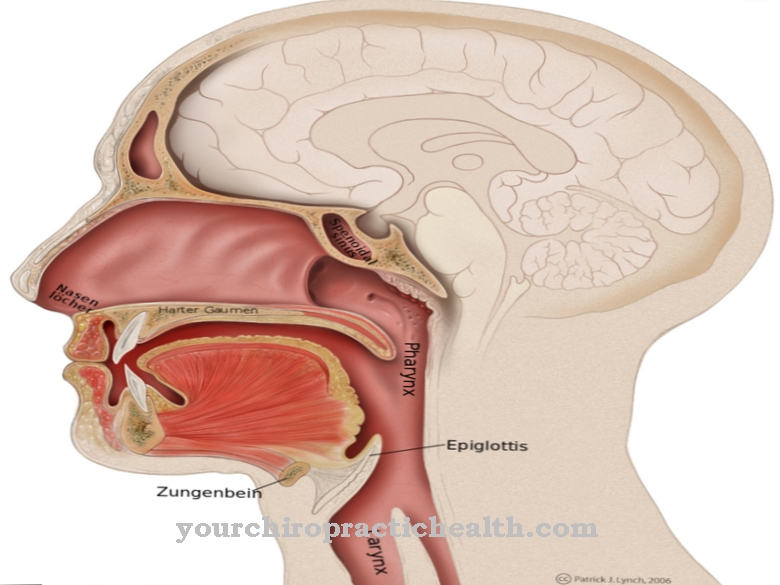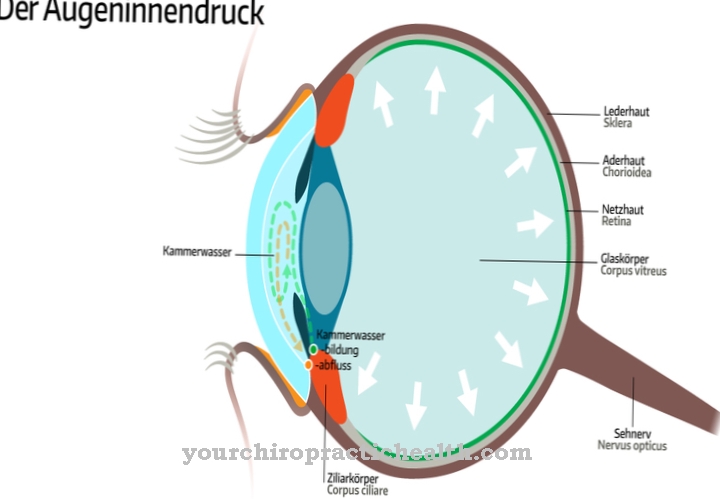Under the Metacarpal bones the orthopedic surgeon understands the five radial tubular bones of the metacarpal. Thanks to their anatomy, they are highly flexible, which is what enables the hand to grasp. Each of the metacarpal bones can be affected by open and closed fractures, but the prognosis is favorable.
What is the metacarpal bone?
The metacarpal bones are the bony base of the metacarpal. This is the section between the wrist and the fingers. This area of the hand consists of five tubular bones arranged almost parallel to one another. Due to this multi-part structure, the metacarpal has enormous elasticity.
Its five bony limbs are numbered in ascending order from the thumbbone. The metacarpus consists of the primum, secundum, tertium, quartum and quintum of the metacarpal. The individual tubular bones of the metacarpal each consist of a base, a body or shaft and a head. The heads of the bones are each located in the direction of the finger bones. The metacarpal bones converge radially. This anatomical shape gives the metacarpal maximum flexibility.
Although most animal species are equipped with metacarpal bones, the structure of the human metacarpal differs significantly from that of most other species. For example, birds have only one metacarpal bone instead of five bones. Horses also have only a single main bone in the metacarpal with a thin bone on the side.
Anatomy & structure
The first metacarpal is the shortest. The second and third are the longest. The metacarpal bone has a cubic shape at its broad base. The so-called interosseous muscles lie between the individual bones of the human metacarpal. These skeletal muscles flex and stretch the finger joints.
The cartilage surfaces of the metacarpal are connected to the carpal bones and run out into so-called carpometacarpal joints. The first of these joints is the thumb saddle joint, which has the greatest mobility compared to the rest of the finger joints. The third metacarpal bone has a stylus process that is connected to the extensor carpi radialis brevis muscle. The shaft of the metacarpal is triangular in cross-section. In the zero position, the tip of the triangle points forward. On the head of the metacarpus there are convex cartilage surfaces on the bones, which are located as the joint head in the metacarpophalangeal joints.
There are small bumps on the sides of the heads that form the starting point for the five finger rays. The entire metacarpal is stabilized by tight ligaments. The metacarpal bones are also connected to the sesamoid bones of the hand by muscles.
Function & tasks
The functions and tasks of the metacarpal bones are extremely diverse. In addition to the motoric and stabilizing functions, the metacarpal bones even have communicative tasks. In terms of motor skills, the grasping movement should be mentioned in particular, as it is almost irreplaceable in everyday life.
The radial structure of the metacarpal bones gives the metacarpal sufficient mobility to support the hand in grasping. The middle hand also plays an important role in holding objects. With the palm of the hand, it forms a stable abutment when grasping and holding movements. However, the metacarpal bones do not only perform motor tasks. The entire hand is traversed by highly sensitive nerves, tendons and vessels. The metacarpal bones form a stable bridge for these nerves and tendons in the hand. The hand vessels can also be accommodated in the metacarpal.
The metacarpal bones are also to be understood as the basis of many hand muscles, which are important not only for motor skills, but also for stabilizing the finger joints. The five finger bones, together with their nerves and muscles, as parts of the metacarpal, fulfill both fine motor tasks and gross motor functions. For example, they let the hand feel, feel and recognize. But they also serve as a communication tool and even enable people to communicate in a non-verbal manner through their pointing functions.
Diseases
Fractures are the most common metacarpal complaint. Any of the five metacarpal bones can be affected by fractures. A fracture can occur on the head as well as the shaft and even the base of the metacarpal bones. The break is either open or closed.
In the case of open fractures of the metacarpal, there is a skin wound in addition to the fraction. Usually falls or sports and work injuries are the cause of the fractures. The diagnosis is usually made using X-ray imaging of the hand. Several metacarpal bones are often affected by a fracture at the same time, especially in the case of fractures caused by a fall. Sometimes the bones at the fracture sites shift from their physiological position. In such cases, corrective surgery is usually the treatment of choice.
Since there are many joints in the metacarpus, this section of the hand is also often affected by osteoarthritis, especially in the area of the thumb and its saddle joint. However, metacarpal pain does not have to correspond to bone or joint pain. Because there are numerous tendons running through the metacarpus, this section of the hand is also prone to tendinitis. Musicians, masseurs and typists are particularly affected by such inflammations, as they regularly overuse the metacarpal. Overstretching can also be observed relatively often in this hand section. For most metacarpal complaints, the prognosis is generally good.













.jpg)

.jpg)
.jpg)











.jpg)